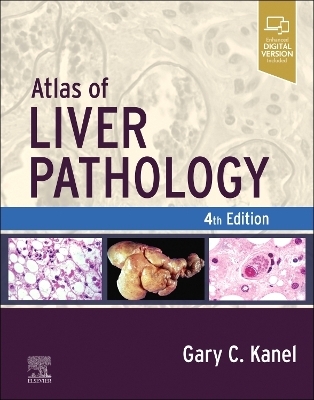
Bile Acids and Immunology
Kluwer Academic Publishers (Verlag)
978-0-7923-8700-8 (ISBN)
- Titel ist leider vergriffen;
keine Neuauflage - Artikel merken
Ursodeoxycholic acid (UDCA) has been shown by many studies to be of benefit in the treatment of primary biliary cirrhosis (PBC) and also of primary sclerosing cholangitis (PSC) (and other cholestatic liver diseases), but the mechanism of action of this drug remains obscure and is, in all probability, of multifactorial nature. Possibly, complex interaction of immunomodulatory and membrane-stabilizing effects in conjunction with an altered composition of the bile acid pool are responsible for the beneficial effect. This book, the proceedings of 86th Falk Symposium "Bile Acids and Immunology" (Part 1 of the Basel Liver Week), held in Basel, Switzerland, October 17-18, 1995, starts with an update on important mechanisms involved in autoimmune mediated processes covering the presentation of antigens and autoantigens by professional and non-professional antigen presenting cells, the recognition of the MHC-antigen complex by T-cells, the role of natural and disease-specific antibodies, as well as the control of immune processes via TH1/TH2 cells and their cytokines.
It then focuses on the recent findings concerning the aetiopathogenesis of PBC and PSC and the effect of UDCA therapy in these disorders. The most relevant questions which have to be answered in this field are: is the biochemical improvement the consequence of a true antiinflammatory or immunosuppressive effect of UDCA or only due to the replacement of hydrophobic by hydrophilic bile acids?; does UDCA increase the efficacy of immunosuppressive drugs and is it necessary to differentiate between patients who need either a mono-UDCA or a combined (UDCA/steroids) therapy?; are PBC and PSC true autoimmune disorders driven by an autoantigen or only "secondary autoimmune" processes induced by a persisting infectious agent, considering the poor response of both disorders to immunosuppressive treatment as compared to patients with autoimmune hepatitis? This book tries to clarify these problems and open new avenues for further research. It should be of interest to all clinicians and researchers in the field of bile acids.
Section I: Basic Immunology: Genetic Aspects, Pathophysiology, Effector Mechanisms. 1. Role of MHC Molecules in Defense Mechanisms to Intracellular Pathogens; M. Plebanski. 2. Pathophysiological role of Th1 and Th2 cells; P. Parronchi, et al. 3. Activation of Immunologically Ignorant Autoreactive T-Cells by Cryptic Epitopes; C.J. Elson, et al. Section II: Bile Acid Metabolism in Cholestatic Liver Diseases. 4. Bile Acid Metabolism and Function in Healthy Man: Possible Interactions with the Immune System; A.F. Hofmann, et al. 5. Methylprednisolone: Is There a Role for PBC Treatment? E. Roda, et al. 6. Biliary Lipid Secretion Rates and Bile Acid Composition in Bile After Liver Transplantation; K.A. Einarsson, et al. Section III: Cholestasis, Bile Acids and Immunology. 7. Immunohistochemistry of Intra- and Extrahepatic Cholestasis; H.P. Dienes, et al. 8. Expression of MHC Molecules During Intra- and Extrahepatic Cholestasis and Their Pathogenetic Implications; V.J. Desmet. 9. Expression of Stress Proteins and Steroid Receptors in Patients with Cholestatic Liver Diseases; A.D. Jorge, D.R. Ciocca. 10. Role of Cytokines and Adhesion Molecules in the Pathogenesis of Biliary Liver Diseases; K. Tanikawa, et al. 11. Tumor Necrosis Factor Alpha in Cholestatic Liver Diseases; J. Prieto. 12. The Effect of Ursodeoxycholic Acid on MHC Antigens in Liver Cells; L. Theilmann, et al. 13. Effect of Ursodeoxycholic Acid on Immune Regulatory Cells; O.N. Le, et al. 14. Effects of Cheno- and Ursodeoxycholic Acids on the Effectors of Cell-Mediated Immunity; Y. Calmus, et al. 15. MHC Expression in Liver and the Effect of Bile Acids; J. Neuberger, R. Joplin. 16. Effects of Ursodeoxycholic Acid on Immunoglobulin and Cytokine Production and Antigen Presentation; M. Yoshikawa, et al. Section IV: Primary Biliary Cirrhosis and Primary Sclerosing Cholangitis. 17. Mitochondrial and Nuclear Autoantigens in Primary Biliary Cirrhosis; M.F. Bassendine, D.E.J. Jones. 18. Molecular Mimicry and Primary Biliary Cirrhosis; J. van de Water, et al. 19. Antineutrophil Cytoplasmic Antibodies in Primary Sclerosing Cholangitis; W-J. Mayet, et al. 20. Cytokine Profiles in Primary Biliary Cirrhosis and Primary Sclerosing Cholangitis; R. Klein, et al. Section V: Bile Acid Therapy of Primary Biliary Liver Diseases. 21. Immunosuppression in Biliary Liver Diseases: New Concepts and Strategies; M.M. Kaplan. 22. Concepts of the Therapeutic Effect of Ursodeoxycholate; S. Guldutuna, et al. 23. Bile Acid Therapy in Primary Biliary Cirrhosis; J. Heathcote. 24. Lessons from Ursotherapy in Primary Biliary Cirrhosis; R. Poupon, R.E. Poupon. 25. Ursodeoxycholic Acid for the Treatment of Primary Sclerosing Cholangitis; A. Stiehl. Section VI: Bile Acid Therapy in Biliary and Non-Biliary Liver Diseases in Combination with Other Therapeutic Regimens. 26. The Treatment of Primary Biliary Cirrhosis with Ursodeoxycholic Acid and Prednisolone; M. Leuschner, et al. 27. The Influence of Ursodeoxycho.
| Erscheint lt. Verlag | 31.7.1996 |
|---|---|
| Reihe/Serie | Falk Symposium ; No. 86 |
| Zusatzinfo | Illustrations |
| Sprache | englisch |
| Einbandart | gebunden |
| Themenwelt | Medizinische Fachgebiete ► Innere Medizin ► Hepatologie |
| Studium ► 1. Studienabschnitt (Vorklinik) ► Physiologie | |
| ISBN-10 | 0-7923-8700-7 / 0792387007 |
| ISBN-13 | 978-0-7923-8700-8 / 9780792387008 |
| Zustand | Neuware |
| Haben Sie eine Frage zum Produkt? |
aus dem Bereich


